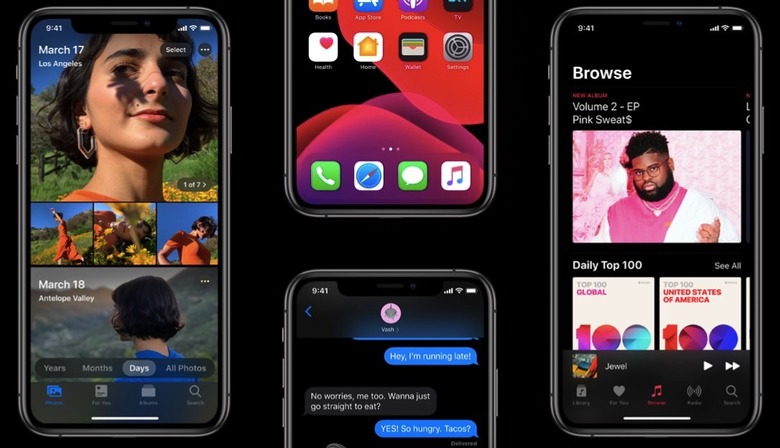iOS 13.6.1 And iPadOS 13.6.1 Now Available To Download
- Apple rolled out iOS 13.6.1 and iPadOS 13.6.1 for iPhone and iPad on Wednesday.
- iOS 13.6.1 doesn't include any major new features, but should address several annoying issues that users have been dealing with since the release of iOS 13.6.
- This is likely to be one of the last updates for iOS 13 ahead of the launch of iOS 14 this fall.
Apple has been seeding iOS 14 beta releases for multiple weeks now, but on Wednesday, the company released a minor update for iOS 13 — the first since iOS 13.6 was released in mid-July. Likely to be one of the final updates for iOS 13, the new version of the mobile operating system features a number of fixes for a few issues.
Here are the official release notes from Apple concerning iOS 13.6.1:
- Addresses an issue where unneeded system data files might not be automatically deleted when available storage is low
- Fixes a thermal management issue that caused some displays to exhibit a green tint
- Fixes an issue where Exposure Notifications could be disabled for some users
Providing you haven't already moved on to the iOS 14 developer beta or public beta, you might find these fixes to be useful. The good news is that the beta has been so stable, there hasn't been any real reason to revert to the current version of the OS. iOS 14 is expected to roll out this fall alongside the new iPhone 12 models.
If you're wondering whether or not your device is compatible with iOS 13.6.1 or iPadOS 13.6.1, we put together a full list below that contains every compatible device. If your device is on there, you're good to go:
- iPhone 11
- iPhone 11 Pro
- iPhone 11 Pro Max
- iPhone XS
- iPhone XS Max
- iPhone XR
- iPhone X
- iPhone 8
- iPhone 8 Plus
- iPhone 7
- iPhone 7 Plus
- iPhone 6s
- iPhone 6s Plus
- iPhone SE (1st generation)
- iPhone SE (2nd generation)
- iPod touch (7th generation)
- iPad Pro 12.9-inch (4th generation)
- iPad Pro 11-inch (2nd generation)
- iPad Pro 12.9-inch (3rd generation)
- iPad Pro 11-inch (1st generation)
- iPad Pro 12.9-inch (2nd generation)
- iPad Pro 12.9-inch (1st generation)
- iPad Pro 10.5-inch
- iPad Pro 9.7-inch
- iPad (7th generation)
- iPad (6th generation)
- iPad (5th generation)
- iPad mini (5th generation)
- iPad mini 4
- iPad Air (3rd generation)
- iPad Air 2
As we're sure you know by now, installing a new iOS or iPadOS update on your iPhone, iPad, or iPod touch couldn't be easier. Just navigate to Settings > General > Software Update and then tap "Download and Install" at the bottom of that page. If you want, you can also install the update through iTunes by connecting your iOS device to a computer. Whichever method you choose, just make sure to back up your device before installing the update.
